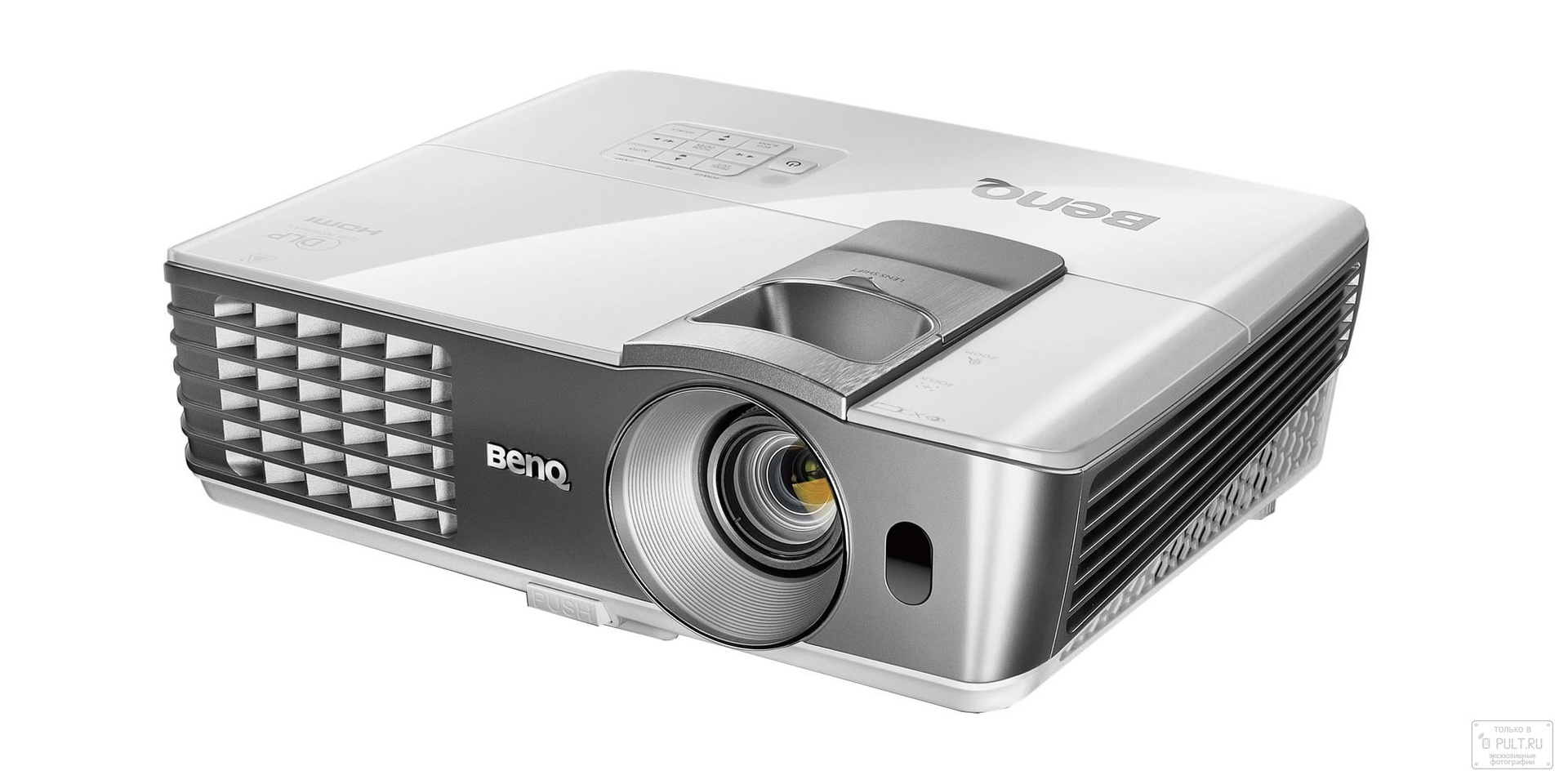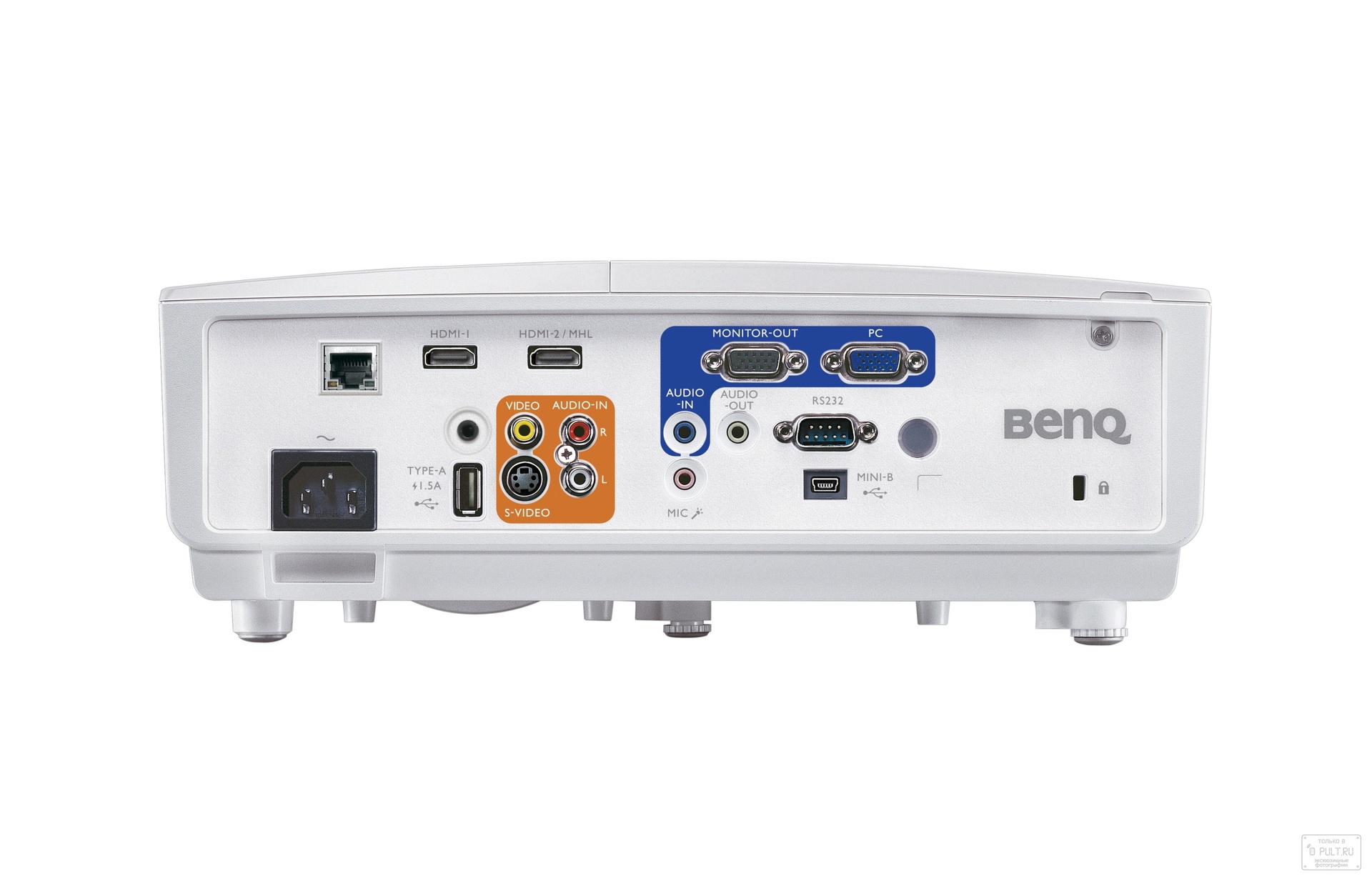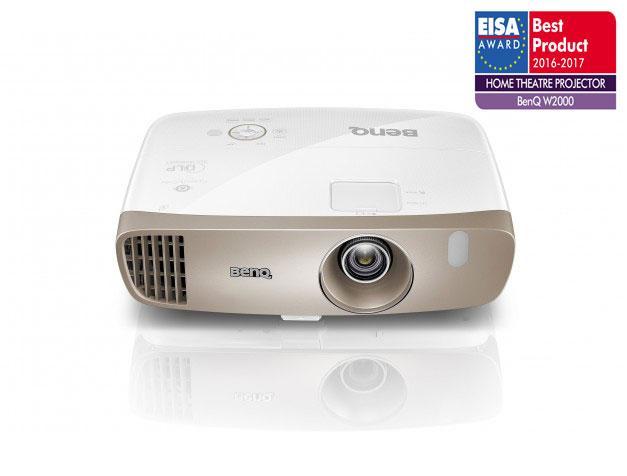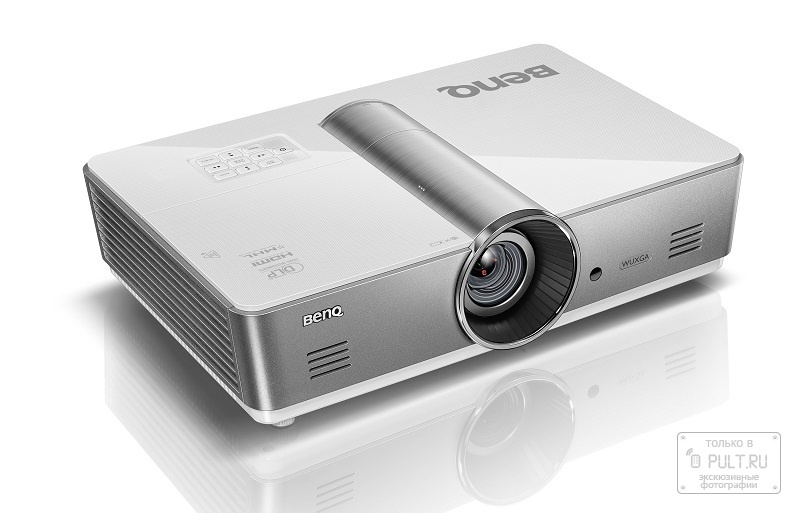Choosing a DLP projector for home and office: recommendations from the BENQ product manager
Our last post about projectors was deliberately free from specifying manufacturers, models and prices. The post described only the technology, their advantages and disadvantages. Given that many subscribers followed this post for specific recommendations, we decided to make a series of publications, where experts give advice on models, price segments and selection criteria. Let's start with BENQ, a company recognized as the leader of the Russian market for multimedia projectors according to ITResearch.

This post is for those who have already decided on the DLP technology and manufacturer. Andrey Taskaev, product manager at BENQ, helped me to deal with the diversity of the range and to understand what can be squeezed into one or another budget. In our conversation, I pretended to be a felt boot, far from the topic and asked questions as if I had not previously written material about projectors and did not delve into the topic in order to get the most detailed and understandable answers.
Let's talk about home projectors. Are there any differences in user requirements and specifications?
Yes, there are quite substantial. You can use the projector in the living room, with insufficient blackout, such as watching a football match or using it with a game console - this is one (here the projector is used in the capacity in which LCD or plasma panels are usually used). It is a completely different situation when at home they create a kind of cinema, exclusively for high-quality cinema.
')
What features do living room solutions have?
The first point is the lighting conditions, in order to get the perfect “cinema” picture, you need a quality blackout. This method is not always suitable for situations with a massive viewing of football in the living room. From here comes a certain technical gradation. The main characteristic is the luminous flux capable of providing a decent picture with a slight dimming. The projector for the living room should have a brightness of not less than 2000ANSI lm (optimally using conventional thick curtains, background artificial lighting - auth. Note). It'll be enough. And, accordingly, the resolution is not less than HD, better than Full HD.
Which BENQ projectors are suitable for such tasks?
The ideal option for a living room in the BENQ model range will be:
W1090 in the segment up to 50 000 rubles.


W1070 + (up to 60,000 rubles)

These projectors can be effectively used as a replacement for a TV, but on a sunny day, if we imagine a situation with the absence of curtains or blinds, they will naturally be seriously inferior to TVs in terms of brightness.
It is natural that there should be requirements for models used in the creation of home theaters. What are they and which models would you recommend?
The reality is that more requirements in such situations are presented to the room - these are the possibilities of sufficiently darkening - dark wallpaper, dark ceiling, dark floor, corresponding acoustic system, screen. Acoustic room treatment will also matter.
Installations of this kind are designed for people who want to watch movies at home almost as much as in a movie theater. This is for those who operate with phrases: “I want to look at the Martian just as in the aimax” or “the color should be what the director invented, not red, but peach.” These people want a perfectly accurate image. The cost of all, together with the projector will be about half a million. In this case, the cost of the projector will be about 60 - 150 thousand rubles. There are models, for example, BenQ MH750, costing up to 100,000, which is interesting, not so picky about lighting (luminous flux 4500 ANSI Lm).


Regarding the requirements for the projector, there must be Full HD or 4 K resolution, high contrast, reference color reproduction and sufficient brightness. Although one cannot say that in a darkened room the last parameter is decisive.
Regarding the color rendition, now there are a lot of marketing terms “color accuracy”, “projector's calibrability”, but in the end it all comes down to color accuracy.
Anticipating the interest of some readers, I will ask a tricky question: what are the advantages of projectors for a home over LCD and plasma panels?
The projector has only one significant advantage - it is a large diagonal, with the total lower cost per square centimeter of the image. If you need a movie - you need a big screen. The projector is a different feeling when watching movies, playing games, etc.
Of course, there are some drawbacks; with a large picture, all the flaws in the image quality are clearly visible. The projector can be used as a replacement for the TV, and this is a controversial question as to what is better, but at the same time no TV can replace the projector ... Although I’m mistaken, I can, but I'm afraid to guess how much a 110-inch TV will cost.
And if we talk about a relatively budgetary level (up to 90,000 rubles) for home theaters, what would you recommend?
If the room is darkened normally, then the BENQ W2000 projector is enough. If the room is dark enough, there is an acceptable sound, you can safely take this projector and work. As a rule, a home theater projector is on average 70–80 thousand for the device itself and some money for switching.
The main feature of this device is high contrast and realistic color reproduction. In my opinion, among our (BENQ - auth.) Projectors - this model is ideal in terms of price / quality in the segment up to 90 thousand rubles. Given the luminous flux of 2200 ANSI Lm, this projector is also suitable for the first situation that we talked about, i.e. as a replacement for the TV.
W2000 (up to 80,000 rubles)

If we talk about solutions for business, negotiation, conferences, etc., what are the requirements for such equipment, what qualities should they have?
It's really simple. If we are talking about projectors for on-site presentations, where it is not clear whether it will be possible to darken the room, then the main characteristic that should be repelled is brightness. In such situations, a luminous flux of about 3000 - 5000 ANSI Lm is needed. With a screen with a diagonal of 100 inches, we will need 3000 ANSI Lm, with 120 inches, already 4000 ANSI Lm, 130 -140 inches will require 5000 ANSI Lm. It is also necessary to determine the screen format.
Another point is related to the frequency of use, in case you plan to use the projector regularly, it makes sense to think about an LED or a laser solution - a more durable light source. But you need to understand that LED technology can not yet provide sufficient luminous flux to work in non-darkened rooms, and the laser will seriously hit the budget.
It is also important to connect the projector's resolution with the resolution of the laptop (PC) with which the projector works. Situations are common in small companies that save on upgrading technology, in which old laptops do not correctly display a picture with new projectors, and laptop video card modes do not provide an opportunity to set the correct resolution.
If we consider not expensive solutions, then MW529 is suitable for presentations and conferences. Here, it is worth noting that when buying it, the user makes a choice between the actual resolution and the luminous flux in favor of the luminous flux, which is natural if you need to buy a budget office projector. The lamp life is also quite high.
Main characteristics of the MW529 (up to 40 000 rubles) :
• light output in normal mode: 3300 ANSI lumens;
• real physical resolution: 1280 x 800;
• maximum contrast 13000: 1
• Default image format: 16:10
• lamp life in normal mode: 4500 h
• lamp life in economy mode: 10,000 hours
• minimum image size: 1.52 m
• scaling factor: 1.1: 1
• Weight - less than 2 kg


There are more expensive solutions for presentations and educational institutions with Full HD resolution and an even more powerful 5000 ANSI luminous flux, for example, BenQ SU922.
The main characteristics of BenQ SU922 (up to 130,000 rubles) :
• luminous flux: 5000 ANSI lm;
• real physical resolution: Full HD (1920 x 1080);
• The default image format: 16:10;
• Scaling factor: 1.07 ÷ 1.71: 1

When choosing a business solution, there is a very simple approach; it is enough to determine the maximum width of the screen, and within the budget, buy the brightest projector possible. The cost of business models can vary widely from 30-50 thousand to millions. Different business, different tasks - different projectors. If you need to choose a budget solution, it makes sense to sacrifice something for the sake of the light flux, since this is a key factor.
I hope the recommendations and review of BENQ products were detailed and will satisfy the reader’s interest in the cost of DLP projectors from BENQ. Using the corporate blog, I remind you that you can buy projectors from the above company from us at reasonable prices.
The presented range can be estimated at the link . By visiting our showrooms, you can easily compare the various models presented in our catalog of manufacturers.
This is not the latest review of projectors from leading manufacturers with comments from their experts, there are several more to come.

This post is for those who have already decided on the DLP technology and manufacturer. Andrey Taskaev, product manager at BENQ, helped me to deal with the diversity of the range and to understand what can be squeezed into one or another budget. In our conversation, I pretended to be a felt boot, far from the topic and asked questions as if I had not previously written material about projectors and did not delve into the topic in order to get the most detailed and understandable answers.
Let's talk about home projectors. Are there any differences in user requirements and specifications?
Yes, there are quite substantial. You can use the projector in the living room, with insufficient blackout, such as watching a football match or using it with a game console - this is one (here the projector is used in the capacity in which LCD or plasma panels are usually used). It is a completely different situation when at home they create a kind of cinema, exclusively for high-quality cinema.
')
What features do living room solutions have?
The first point is the lighting conditions, in order to get the perfect “cinema” picture, you need a quality blackout. This method is not always suitable for situations with a massive viewing of football in the living room. From here comes a certain technical gradation. The main characteristic is the luminous flux capable of providing a decent picture with a slight dimming. The projector for the living room should have a brightness of not less than 2000ANSI lm (optimally using conventional thick curtains, background artificial lighting - auth. Note). It'll be enough. And, accordingly, the resolution is not less than HD, better than Full HD.
Which BENQ projectors are suitable for such tasks?
The ideal option for a living room in the BENQ model range will be:
W1090 in the segment up to 50 000 rubles.
- light stream: 2000 ANSI Lm;
- 10,000: 1 contrast ratio;
- real resolution: 1080p (1920 × 1080);
- projection ratio: 1.15–1.5: 1 (distance / width);
- supported resolution up to WUXGA 1920x1200 @ 60 Hz.


W1070 + (up to 60,000 rubles)
- Luminous flux: 2,200 ANSI lm;
- contrast ratio: 10,000;
- real resolution: 1920x1080 (Full HD);
- color palette: 1.07 billion colors;
- type of correction: keystone distortion ^ vertical / horizontal;
- supported resolution: up to WUXGA 1920x1200 @ 60 Hz.

These projectors can be effectively used as a replacement for a TV, but on a sunny day, if we imagine a situation with the absence of curtains or blinds, they will naturally be seriously inferior to TVs in terms of brightness.
It is natural that there should be requirements for models used in the creation of home theaters. What are they and which models would you recommend?
The reality is that more requirements in such situations are presented to the room - these are the possibilities of sufficiently darkening - dark wallpaper, dark ceiling, dark floor, corresponding acoustic system, screen. Acoustic room treatment will also matter.
Installations of this kind are designed for people who want to watch movies at home almost as much as in a movie theater. This is for those who operate with phrases: “I want to look at the Martian just as in the aimax” or “the color should be what the director invented, not red, but peach.” These people want a perfectly accurate image. The cost of all, together with the projector will be about half a million. In this case, the cost of the projector will be about 60 - 150 thousand rubles. There are models, for example, BenQ MH750, costing up to 100,000, which is interesting, not so picky about lighting (luminous flux 4500 ANSI Lm).


Regarding the requirements for the projector, there must be Full HD or 4 K resolution, high contrast, reference color reproduction and sufficient brightness. Although one cannot say that in a darkened room the last parameter is decisive.
Regarding the color rendition, now there are a lot of marketing terms “color accuracy”, “projector's calibrability”, but in the end it all comes down to color accuracy.
Anticipating the interest of some readers, I will ask a tricky question: what are the advantages of projectors for a home over LCD and plasma panels?
The projector has only one significant advantage - it is a large diagonal, with the total lower cost per square centimeter of the image. If you need a movie - you need a big screen. The projector is a different feeling when watching movies, playing games, etc.
Of course, there are some drawbacks; with a large picture, all the flaws in the image quality are clearly visible. The projector can be used as a replacement for the TV, and this is a controversial question as to what is better, but at the same time no TV can replace the projector ... Although I’m mistaken, I can, but I'm afraid to guess how much a 110-inch TV will cost.
And if we talk about a relatively budgetary level (up to 90,000 rubles) for home theaters, what would you recommend?
If the room is darkened normally, then the BENQ W2000 projector is enough. If the room is dark enough, there is an acceptable sound, you can safely take this projector and work. As a rule, a home theater projector is on average 70–80 thousand for the device itself and some money for switching.
The main feature of this device is high contrast and realistic color reproduction. In my opinion, among our (BENQ - auth.) Projectors - this model is ideal in terms of price / quality in the segment up to 90 thousand rubles. Given the luminous flux of 2200 ANSI Lm, this projector is also suitable for the first situation that we talked about, i.e. as a replacement for the TV.
W2000 (up to 80,000 rubles)
- light stream: 2200 ANSI lm;
- contrast ratio: 15,000: 1;
- real resolution 1920x1080 (Full HD);
- trapezoid correction: vertical ± 30º, horizontal ± 30;
- lens shift: vertical + 10%;

If we talk about solutions for business, negotiation, conferences, etc., what are the requirements for such equipment, what qualities should they have?
It's really simple. If we are talking about projectors for on-site presentations, where it is not clear whether it will be possible to darken the room, then the main characteristic that should be repelled is brightness. In such situations, a luminous flux of about 3000 - 5000 ANSI Lm is needed. With a screen with a diagonal of 100 inches, we will need 3000 ANSI Lm, with 120 inches, already 4000 ANSI Lm, 130 -140 inches will require 5000 ANSI Lm. It is also necessary to determine the screen format.
Another point is related to the frequency of use, in case you plan to use the projector regularly, it makes sense to think about an LED or a laser solution - a more durable light source. But you need to understand that LED technology can not yet provide sufficient luminous flux to work in non-darkened rooms, and the laser will seriously hit the budget.
It is also important to connect the projector's resolution with the resolution of the laptop (PC) with which the projector works. Situations are common in small companies that save on upgrading technology, in which old laptops do not correctly display a picture with new projectors, and laptop video card modes do not provide an opportunity to set the correct resolution.
If we consider not expensive solutions, then MW529 is suitable for presentations and conferences. Here, it is worth noting that when buying it, the user makes a choice between the actual resolution and the luminous flux in favor of the luminous flux, which is natural if you need to buy a budget office projector. The lamp life is also quite high.
Main characteristics of the MW529 (up to 40 000 rubles) :
• light output in normal mode: 3300 ANSI lumens;
• real physical resolution: 1280 x 800;
• maximum contrast 13000: 1
• Default image format: 16:10
• lamp life in normal mode: 4500 h
• lamp life in economy mode: 10,000 hours
• minimum image size: 1.52 m
• scaling factor: 1.1: 1
• Weight - less than 2 kg


There are more expensive solutions for presentations and educational institutions with Full HD resolution and an even more powerful 5000 ANSI luminous flux, for example, BenQ SU922.
The main characteristics of BenQ SU922 (up to 130,000 rubles) :
• luminous flux: 5000 ANSI lm;
• real physical resolution: Full HD (1920 x 1080);
• The default image format: 16:10;
• Scaling factor: 1.07 ÷ 1.71: 1

When choosing a business solution, there is a very simple approach; it is enough to determine the maximum width of the screen, and within the budget, buy the brightest projector possible. The cost of business models can vary widely from 30-50 thousand to millions. Different business, different tasks - different projectors. If you need to choose a budget solution, it makes sense to sacrifice something for the sake of the light flux, since this is a key factor.
Epilogue with jeans Pult.ru
I hope the recommendations and review of BENQ products were detailed and will satisfy the reader’s interest in the cost of DLP projectors from BENQ. Using the corporate blog, I remind you that you can buy projectors from the above company from us at reasonable prices.
The presented range can be estimated at the link . By visiting our showrooms, you can easily compare the various models presented in our catalog of manufacturers.
This is not the latest review of projectors from leading manufacturers with comments from their experts, there are several more to come.
Source: https://habr.com/ru/post/403343/
All Articles